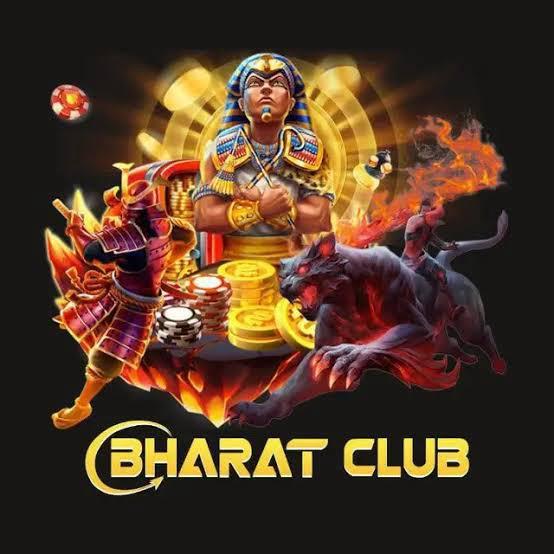
In the ever-evolving world of digital entertainment, online color prediction games have emerged as a compelling intersection of simplicity, suspense, and strategy. These games, which challenge players to predict the next color in a randomized sequence—typically red, green, or violet—have captivated millions across mobile and desktop platforms like Bht club login app. But their rise is not just a product of clever design or viral marketing. It’s part of a broader movement reshaping how we interact with digital systems: the gamification trend.
Gamification, the application of game-like elements in non-game contexts, has become a powerful tool for engagement across industries. From fitness apps and education platforms to workplace productivity tools, gamification taps into our innate desire for achievement, competition, and reward. Online color prediction games are both a product and a driver of this trend, blending real-time decision-making with psychological incentives that keep users coming back.
The Mechanics of Gamified Engagement
At first glance, color prediction games appear deceptively simple. Players choose a color, place a bet, and wait for the outcome. But beneath this minimalistic surface lies a sophisticated system of gamified mechanics. These include progress bars, daily login bonuses, streak rewards, leaderboards, and achievement badges. Each of these elements is designed to trigger a sense of accomplishment and encourage continued participation.
The games often incorporate levels or tiers that unlock new features or higher payout ratios. This progression system mirrors the leveling mechanics found in traditional video games, giving players a sense of growth and mastery. Even when outcomes are determined by random number generators, the structure of the game creates the illusion of skill and control, which is a hallmark of effective gamification.
Psychological Triggers and Player Motivation
Gamification works because it taps into core psychological drivers. Color prediction games leverage these triggers with precision. The anticipation of a win, the thrill of a near-miss, and the satisfaction of completing a challenge all activate the brain’s reward system. This creates a feedback loop that reinforces behavior and builds habit.
Variable rewards—where the outcome is unpredictable—are particularly effective. They keep players engaged by offering intermittent reinforcement, a technique long used in slot machines and other games of chance. When combined with visual cues like flashing lights, celebratory animations, and sound effects, these rewards become even more compelling.
Social comparison is another powerful motivator. Leaderboards and multiplayer modes allow players to measure their performance against others, fostering a sense of competition and community. This social layer adds depth to the experience and encourages users to return not just for the game, but for the social interaction it facilitates.
The Role of Personalization and Customization
As gamification matures, personalization has become a key differentiator. Color prediction platforms are increasingly offering customizable interfaces, avatars, and themes. Players can tailor their experience to reflect their preferences, which enhances emotional investment and satisfaction.
Some platforms use artificial intelligence to analyze player behavior and offer personalized challenges or betting suggestions. This adaptive approach makes the game feel more responsive and engaging, increasing the likelihood of long-term retention. By aligning the game’s difficulty and rewards with the player’s skill level and habits, developers can create a more immersive and satisfying experience.
Beyond Entertainment: Gamification as a Business Model
The success of color prediction games is not just about entertainment—it’s also about monetization. Gamification provides a framework for encouraging microtransactions, referrals, and user-generated growth. Players are often rewarded for inviting friends, completing tasks, or reaching milestones, all of which contribute to the platform’s expansion.
These games also serve as a testing ground for broader applications of gamification. The mechanics that drive engagement in color prediction games are being adapted for use in e-commerce, education, and even healthcare. For example, the same reward systems that encourage daily play can be used to promote healthy habits or learning goals.
Ethical Considerations and Responsible Design
As with any powerful tool, gamification comes with ethical responsibilities. The same mechanics that drive engagement can also lead to compulsive behavior, especially when real money is involved. Developers must balance the desire for user retention with the need for transparency and responsible design.
Many platforms are now incorporating features like deposit limits, self-exclusion tools, and educational content about responsible gaming. These measures are essential for building trust and ensuring that gamification enhances rather than exploits the user experience.
Transparency is also critical. Players should understand how outcomes are determined, what their odds are, and how their data is being used. Platforms that prioritize ethical design are more likely to build sustainable communities and long-term success.
The Future of Gamified Prediction
Looking ahead, the fusion of gamification and color prediction is likely to become even more sophisticated. Emerging technologies such as augmented reality, blockchain, and AI will enable new forms of interaction and personalization. Players might soon predict colors in immersive 3D environments, earn blockchain-based rewards, or receive AI-generated coaching based on their gameplay patterns.
As the boundaries between gaming, commerce, and social interaction continue to blur, color prediction games will remain at the forefront of the gamification trend. They offer a glimpse into a future where every digital experience is designed to be engaging, rewarding, and deeply personal.
Final Thoughts: A Colorful Future
Online color prediction games are more than just a passing fad. They are a vivid example of how gamification can transform simple interactions into compelling experiences. By blending chance with strategy, personalization with community, and entertainment with reward, these games have captured the imagination of a generation.
As gamification continues to shape the digital world, color prediction games will evolve alongside it—becoming smarter, more immersive, and more integrated into our daily lives. Whether you play for fun, competition, or curiosity, one thing is clear: the future of gamified entertainment is bright, bold, and full of color.

